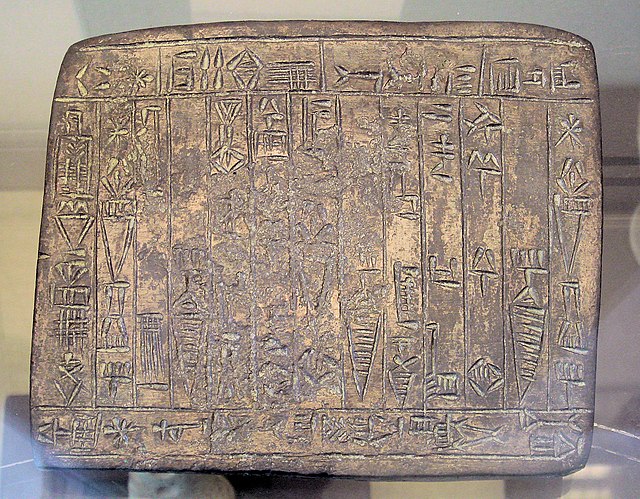Urkesh, also transliterated Urkish, is a tell, or settlement mound, located in the foothills of the Taurus Mountains in Al-Hasakah Governorate, northeastern Syria. It was founded during the fourth millennium BC, possibly by the Hurrians, on a site which appears to have been inhabited previously for a few centuries. The city god of Urkesh was Kumarbi, father of Teshup.
View of Tell Mozan from the north.
The Louvre lion and accompanying stone tablet bearing the earliest known text in Hurrian
Foundation tablet. Dedication to God Nergal by Hurrian king Atalshen, king of Urkish and Nawar, Habur Bassin, circa 2000 BC. Louvre Museum AO 5678. "Of Nergal the lord of Hawalum, Atal-shen, the caring shepherd, the king of Urkesh and Nawar, the son of Sadar-mat the king, is the builder of the temple of Nergal, the one who overcomes opposition. Let Shamash and Ishtar destroy the seeds of whoever removes this tablet. Shaum-shen is the craftsman."
The 4th millennium BC spanned the years 4000 BC to 3001 BC. Some of the major changes in human culture during this time included the beginning of the Bronze Age and the invention of writing, which played a major role in starting recorded history.
Monte d'Accoddi is an archaeological site in northern Sardinia, Italy, located in the territory of Sassari near Porto Torres. 4th millennium BC.
Sumerian priest-king from Uruk, Mesopotamia, circa 3300–3000 BC
Pharaoh Scorpion II on the Scorpion Macehead, c. 3200 BC
Bronze Age spread of Yamnaya steppe pastoralist ancestry into two subcontinents—Europe and South Asia—from c. 3300 to 1500 BC.







